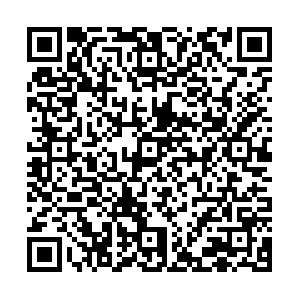Investigation and Analysis on Health Literacy of Students in a Medical College in Yunnan Province
-
摘要:
目的 了解云南省某医学院校大学生健康素养,分析其影响因素并对今后开展干预措施提供依据和有针对性的策略。 方法 采用分层整群随机抽样的方法抽取云南省某医学院校本科学生作为调查对象,共调查2 182人,使用2020版中国公民健康素养调查问卷进行调查。 结果 该校大学生总体具备健康素养比例为84.7%,其中具备基本知识理念、健康生活方式与行为和健康技能的比例为68.1%、77.2%和75.9%。在分项比较中,男性大学生与女性大学生具备健康素养水平比例分别为76.5%和89.2%,差异有统计学差异(P < 0.01);一年级至五年级的基本知识素养分别为60.3%、66.0%、74.9%、74.3%、76.7%,差异有显著统计学差异( P < 0.01)。Logistic回归分析显示性别和家庭受教育程度是影响医学生健康素养的主要因素。 结论 女性医学生健康素养高于男性医学生;随着在校年级的增高,医学生基本知识素养水平不断提高。家庭受教育程度高的医学院校大学生健康素养更低。 Abstract:Objective To understand the health literacy of medical college students in Yunnan Province and to analyze its influencing factors, so as to provide basis and targeted strategies for future interventions. Methods Random cluster sampling method was used, and 2182 medical students were investigated by using the 2020 Chinese Citizens Health Literacy Questionnaire. Results The proportion of college students with health literacy was 84.7%, among which 68.1%, 77.2% and 75.9% had basic healthy knowledge, healthy lifestyles or behaviors, and healthy skills, respectively. The proportion of male and female college students with health literacy levels was 76.5% and 89.2%, respectively, the difference was statistically significant (P < 0.01). The proportion of students with healthy knowledge literacy from grade one to grade five was 60.3%, 66.0%, 74.9%, 74.3% and 76.7% , respectively, with a significant statistical difference ( P < 0.01). The logistic regression analysis showed that gender and family education level were the primary factors affecting healthy literacy of medical students. Conclusions The health literacy of female medical students is better than that of male students. With the increase of grades, the healthy knowledge literacy of medical students continues to improve. Medical students with higher family education level tend to have poor healthy literacy. -
Key words:
- Medical students /
- Health literacy /
- Investigation and analysis
-
表 1 调查学生基本情况(n)
Table 1. Investigation of the basic information of students (n)
基本情况 n 百分比(%) 性别 男生 771 35.3 女生 1 411 64.7 民族 汉族 1 647 75.5 少数民族 535 24.5 专业 临床医学 1 152 52.8 其他专业 1 030 47.2 学位 医学学位 1 376 63.1 非医学学位 806 36.9 年级 一年级 751 34.4 二年级 429 19.7 三年级 685 31.4 四年级 214 9.8 五年级 103 4.7 生源地 农村 1 630 74.7 城市 552 25.3 家庭受教育程度 低 1 327 60.8 高 855 39.2 表 2 总体健康素养、基本知识素养、健康生活方式与行为素养和健康技能素养比较[n(%)]
Table 2. Comparison of overall health literacy,basic knowledge literacy,healthy lifestyle and behavior and health skills [n(%)]
项目 总体健康素养 基本知识素养 健康生活方式与行为素养 健康技能素养 性别 男性 590(76.5) 475(61.6) 551(71.5) 515(66.8) 女性 1 258(89.2) 1 012(71.7) 1 133(80.3) 1 141(80.9) χ2 61.373 23.495 22.079 53.935 P < 0.001 < 0.001 < 0.001 < 0.001 民族 汉族 1 388(84.3) 355(68.7) 1 270(77.1) 1 239(75.2) 少数民族 460(86.0) 1 132(66.4) 414(77.4) 417(77.9) χ2 0.908 1.050 0.017 1.629 P 0.341 0.310 0.896 0.202 专业 临床 964(83.7) 789(68.5) 867(75.3) 844(73.3) 其他 884(85.8) 698(67.8) 817(79.3) 812(78.8) χ2 1.929 0.131 5.089 9.225 P 0.165 0.718 0.024 0.002** 年级 一年级 632(84.2) 453(60.3) 573(76.3) 561(74.7) 二年级 355(82.8) 283(66.0) 324(75.5) 315(73.4) 三年级 586(85.5) 513(74.9) 527(76.9) 526(76.8) 四年级 180(84.1) 159(74.3) 173(80.8) 166(77.6) 五年级 95(92.2) 79(76.7) 87(84.5) 88(85.4) χ2 6.375 43.689 5.755 7.767 P 0.173 < 0.001 0.218 0.100 生源地 农村 1 379(84.6) 1 098(67.4) 1 260(77.3) 1 235(75.8) 城市 469(85.0) 389(70.5) 424(76.8) 421(76.3) χ2 0.042 1.836 0.056 0.057 P 0.838 0.175 0.813 0.812 学位 医学 1 159(84.2) 946(68.8) 1 046(76.0) 1 023(74.3) 其他 689(85.5) 67.1 638(79.2) 633(78.5) χ2 0.617 0.621 2.843 4.878 P 0.432 0.431 0.092 0.027* 父母教育程度 低 1 143(86.1) 900(67.8) 1 056(79.6) 1 025(77.2) 高 705(82.5) 587(68.7) 628(73.5) 631(73.8) χ2 5.426 0.166 11.084 3.365 P 0.020* 0.684 0.001** 0.067 *P < 0.05, **P < 0.01。 表 3 Logistic 回归分析结果
Table 3. Logistic regression analysis results
B SE Wald χ2 P OR 95%CI 常数项 0.559 0.292 3.656 0.056 1.749 性别 0.907 0.121 56.011 < 0.01 2.476 1.953~3.139 父母教育程度 −0.245 0.123 4.006 0.045 0.782 0.615~0.995 -
[1] Batterham R W,Beauchamp A,Osborne R H. Health Literacy[J]. International Encyclopedia of Public Health (Second Edition),2017,(3):428-437. [2] 中共中央国务院. 《“健康中国2030”规划纲要》 [EB/OL]. http://www.otcmoh.org.cn/info/183.html. 2016-10-25/2021-10-20. [3] 卫生健康委员会. 2020年全国居民健康素养水平升至23.15% [EB/OL]. http://www.gov.cn/xinwen/2021-04/01/content_5597287.htm. 2021-4-1/2021-10-20. [4] 王光军,王文霞,焦宏. 医学生健康素养现状及影响因素分析[J]. 河北北方学院学报(社会科学版),2016,32(2):98-100. doi: 10.3969/j.issn.2095-462X.2016.02.025 [5] 侯娅婕,韩旭,刘扬,等. 某医学院校学生健康素养现状及影响因素[J]. 中华疾病控制杂志,2019,23(9):1067-1071. [6] 韦朝华,霍江华,王丽萍,等. 健康中国背景下盐城医学生健康素养现况调查[J]. 职业与健康,2020,36(11):1545-1548. [7] 刘国良,王慧霞,林玲,等. 河南省大学生健康素养状况分析[J]. 卫生职业教育,2020,38(13):137-139. [8] 董亚楠,任书强,郑伟,等. 大学生健康素养现况调查与干预途径探讨[J]. 科技风,2021,5(14):126-127. [9] 刘环,张伟,邓小冬,等. 医学生健康素养现状调查及影响因素分析[J]. 中国医药导报,2017,14(35):33-36. [10] 王磊,胡传来,周慧赟. 安徽某高校医学生健康素养影响因素研究[J]. 蚌埠医学院学报,2017,42(6):799-805. [11] 邓世佶,彭煜健,王艺蓓,等. 江苏某大学医学生与非医学生健康素养的比较[J]. 环境与职业医学,2018,35(4):347-351. [12] 单德志,徐国栋,李玉,等. 宁夏某大学临床医学生健康素养现状调查[J]. 宁夏医科大学学报,2017,39(3):344-347. [13] 杨蕾,曹明芹,马金凤. 新疆医学生健康素养现况调查及影响因素分析[J]. 新疆医科大学学报,2014,37(12):1651-1653. doi: 10.3969/j.issn.1009-5551.2014.12.027 [14] 王晶晶,王凯强,白羽,等. 医学院校大学生健康素养现状及其内部通径分析[J]. 中国健康教育,2017,33(5):416-420. [15] 马莹莹,李丽娟,尹春蕾,等. 我国少数民族居民健康素养研究进展[J]. 普洱学院学报,2021,37(1):37-40. doi: 10.3969/j.issn.2095-7734.2021.01.013 [16] 王文迪,万宇. 少数民族大学生健康素养状况及影响因素分析[J]. 当代体育科技,2019,9(35):110-112. [17] Li Z,Tian Y,Gong Z,et al. Health literacy and regional heterogeneities in China:A Population-Based Study[J]. Front Public Health,2021,9(603325):1-9. [18] 中华人民共和国人民政府. 习近平庄严宣告: 我国脱贫攻坚战取得了全面胜利[EB/OL]. http://www.gov.cn/xinwen/2021-02/25/content_5588768.htm. 2021-2-25/2021-10-20. [19] 张泽琛,裘美娟,梁炬峰,等. 2018年某医学院校大学生健康素养水平调查研究[J]. 中国误诊学杂志,2018,13(10):438-441. [20] 李伟光,赵晓红,李志慷,等. 河北省某高校大学生健康素养水平及影响因素研究[J]. 科技资讯,2021,19(12):251-254. [21] 石珺怡,车晓玉,刘菊芬,等. 2016—2019年中国高校学生健康素养水平Meta分析[J]. 中国健康教育,2021,37(8):689-694. [22] 王艺园. 大学生健康教育现状与思考[J]. 中国健康教育,2018,34(6):573-575. -





 下载:
下载: 
